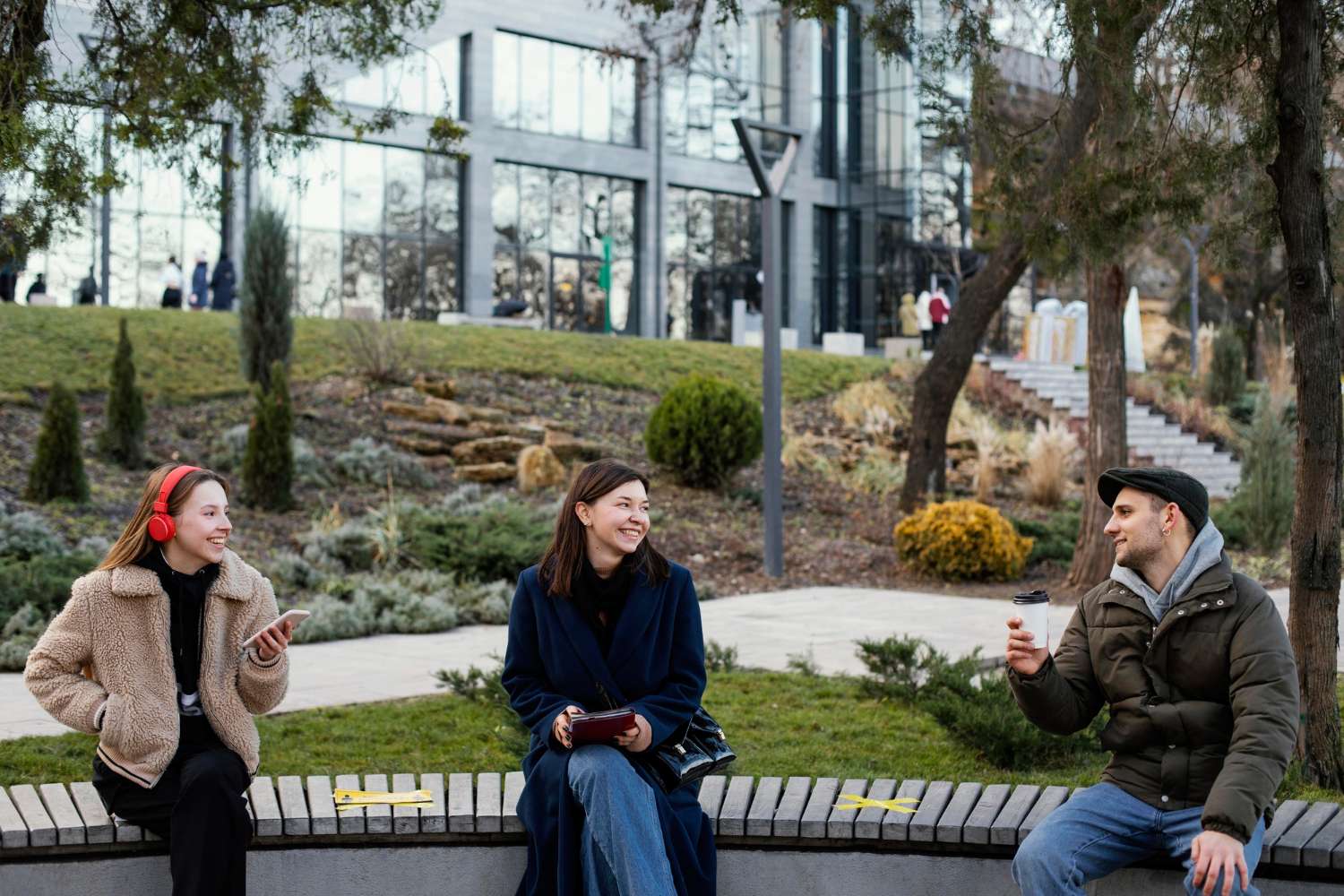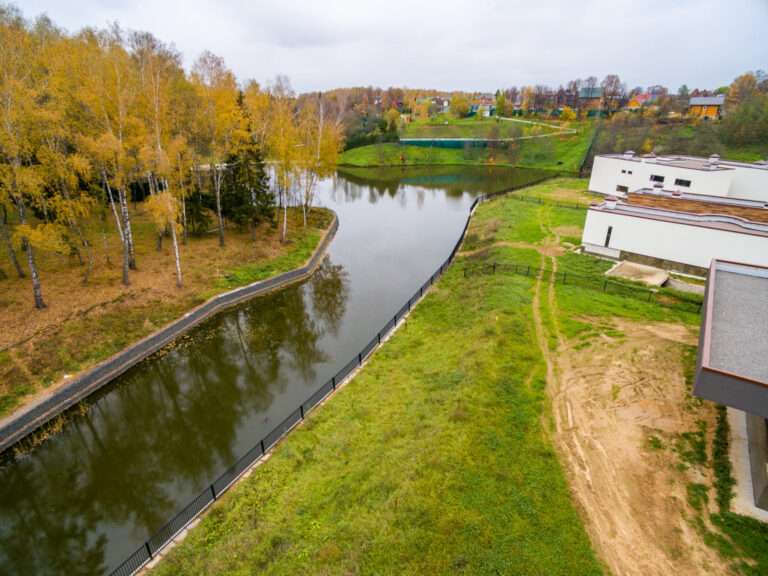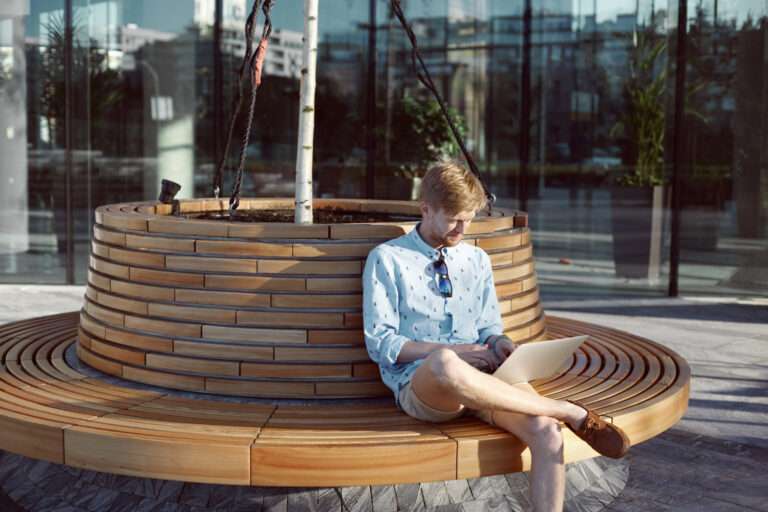How Public Realm Design Shapes the Way We Experience Urban Spaces
Ever noticed how some places just feel better than others? A square you like to sit in, a street that’s oddly relaxing to walk through, or even a bench that seems perfectly placed for people-watching. That’s no coincidence – it’s public realm design at work.
Public spaces are more than gaps between buildings. They’re where the rhythm of city life plays out – the markets, the quiet corners, the buskers, the brief exchanges between strangers. A well-designed public realm shapes how we experience all of that. It influences behaviour, mood, and even safety.
And yet, it’s often overlooked. People talk about housing, transport, sustainability – but the space between those things? That’s where cities either breathe or choke. Good design here isn’t decoration; it’s the difference between a place that invites you in and one that pushes you away.
Public realm design is where architecture meets humanity – the point where people and place come face to face.
What Exactly Is Public Realm Design?
It’s a broad term, but at its core, it means shaping the parts of a town or city that everyone uses. Streets, pavements, plazas, parks, waterfronts, cycleways – the connective tissue that links everything else together.
Unlike private developments, the public realm is collective. It must work for pedestrians, cyclists, children, the elderly, and those with disabilities. It has to balance beauty with function, history with modernity, and permanence with flexibility.
Think of it as civic choreography. Every kerb, bench, and lamp post contributes to the dance. And when the design works, you barely notice it. When it doesn’t, you can’t think about anything else.
If you want a deeper look at how urban spaces are planned, see our page on public realm and urban regeneration.
The Psychology of Space
Walk down a narrow medieval street in York. Then stroll along the open concourse of Sheffield’s Peace Gardens. Different emotions, right? One feels intimate, the other expansive. Space affects how we behave – and how safe or welcome we feel.
Human psychology responds instinctively to cues: light, sound, proportion, proximity. A plaza that’s too vast feels alienating; one that’s cluttered feels claustrophobic. Designers work constantly to get this balance right.
There’s a fascinating principle called “prospect and refuge.” It suggests we like to be in places where we can see without being seen – open view, but somewhere to tuck ourselves away. That’s why café terraces facing a square feel so comfortable. You’re part of the scene, but you’ve got your back covered.
Good public realm design taps into this without you ever realising.
The British Approach
In the UK, public realm design has evolved through waves of thinking. Post-war town planners focused on utility – get cars moving, separate pedestrians, maximise function. But by the 1980s, that functionalism had drained our cities of soul.
Places like Birmingham, Sheffield, and Manchester began to rethink. Out went the grey concrete walkways. In came greenery, fountains, and spaces for people rather than vehicles.
One of the turning points was Sheffield’s “Heart of the City” project in the late 1990s. The Peace Gardens, once a car park, became a civic square full of water features and accessible routes. People came back. Shops reopened. A simple act of public realm improvement helped kickstart regeneration.
Now, nearly every UK city has a similar story – Glasgow’s George Square renewal, Leicester’s Cathedral Gardens, Nottingham’s Old Market Square. Each shows how rethinking public space can change how people use an entire city centre.
Design Elements That Shape Experience
1. Movement and Flow
People need to move freely and intuitively. Paths should lead naturally from one place to another, with clear sightlines. Ever felt lost in a plaza with no focal point? That’s poor design.
2. Seating and Pause Points
Benches aren’t just for resting – they invite interaction. Place them where people want to sit, not just where there’s spare space. Add trees for shade and you’ve suddenly got a micro-destination.
3. Lighting
The soft glow of lamplight changes everything. It adds warmth, visibility, and safety. Lighting isn’t just functional – it sets tone. Warm white makes a place feel inviting; cold white makes it sterile.
4. Water and Sound
Running water can mask traffic noise and calm the atmosphere. Even a shallow rill or small fountain changes how we linger.
5. Materials and Texture
Granite feels different from resin or brick. Tactile surfaces make streets feel crafted, not just poured. And texture helps with accessibility – guiding the visually impaired and reducing slips.
6. Greenery and Ecology
Trees, planters, and green roofs break up the hardscape. They cool air, absorb pollutants, and offer shade. But it’s not just functional – greenery gives emotional relief from the urban grind.
7. Accessibility
This one’s huge. Public spaces have to serve everyone. Step-free routes, tactile paving, handrails – these details determine whether someone can enjoy the city independently.
How Public Realm Design Impacts Community
Cities aren’t just buildings and roads – they’re social systems. And the design of public spaces dictates how those systems behave.
Ever noticed how some parks feel safer simply because they’re busier? That’s called “passive surveillance.” The more eyes on a space, the less crime it attracts. Good design encourages people to linger, which in turn makes everyone feel safer.
It’s also about identity. A well-designed town square can become the face of a city. Think of London’s Trafalgar Square or Liverpool’s Pier Head. These places define local pride.
But smaller-scale spaces matter just as much. A pocket park tucked between terraces can do more for mental health than a new shopping centre. People need spots to breathe. Somewhere to eat lunch, watch the world go by, or just exist without paying for the privilege.
The Economics of Good Design
Investing in public space isn’t just a “nice to have.” There’s hard data to back it up.
| Benefit | Evidence or Example |
|---|---|
| Increased footfall | Retail areas with pedestrian-friendly design see up to 40% higher footfall. |
| Property value uplift | Homes near high-quality public spaces can be worth 20% more. |
| Reduced crime | Better lighting and open sightlines cut antisocial behaviour. |
| Improved wellbeing | Access to green and open space reduces stress and promotes physical activity. |
You can’t measure atmosphere directly, but you can see the results in property values, visitor numbers, and business growth. Councils know this, which is why regeneration projects now start with landscape architects, not end with them.
Regeneration Through Design
Look at King’s Cross in London. Once industrial wasteland, now one of Europe’s most successful urban redevelopments. The success wasn’t down to flashy buildings – it was how the space between them worked. Open squares, canal walks, cultural pockets.
Public realm design gives a framework for regeneration. It signals investment, draws people in, and invites private development to follow.
It’s not just for cities either. Market towns across Britain are rediscovering their high streets by rethinking pavements, parking, and planting. When people feel comfortable lingering, they spend more.
In my experience, the best designs start with humility – not a masterplan that imposes form, but one that listens. Every place has its own rhythm, its own quirks. Design should amplify that, not flatten it.
Balancing Heritage and Modern Needs
One of the trickiest parts of public realm design is working within historic settings. You can’t just drop sleek granite paving beside a 12th-century cathedral and call it done.
Take York or Bath – cities layered with history. Designers there must tread lightly, blending materials and styles so the old and new sit comfortably together. Subtle lighting, hand-tooled stone, low planting. No one element shouting louder than the rest.
But heritage doesn’t mean freezing time. Cities evolve. The challenge is to make that evolution graceful – to add without erasing.
The Sustainability Angle
In recent years, sustainability has moved from buzzword to baseline. Public realm projects now factor in everything from rainwater management to biodiversity corridors. Permeable paving reduces flooding. Native planting supports pollinators.
There’s a quiet revolution happening beneath our feet. Water attenuation systems built under city squares, solar-powered lighting, recycled aggregate surfaces. You might not notice it, but these elements make spaces resilient – built to cope with the extremes of modern climate.
It’s another reminder that good design isn’t about looks. It’s about longevity.
What Makes a Place “Work”?
You know it when you feel it. People use it naturally. Kids run around without feeling penned in. Cafés spill onto pavements without blocking footpaths. There’s movement, but not chaos.
That’s the magic of successful public realm design – it disappears. You’re aware of the place, not the planning behind it.
When it fails, it’s the opposite. Confusing crossings, awkward gradients, benches no one uses. You can sense when a designer didn’t walk the route themselves.
Urban design is empathy made visible.
Conclusion
Public realm design isn’t just about paving patterns or benches. It’s how we choreograph everyday life. Done well, it shapes how we move, connect, and belong. Done badly, it drains a city of vitality.
Every brick, light post, and tree has a job to do – not just to look pretty, but to make a place feel right. And in the end, that’s what we remember. Not the materials or masterplans, but how the space made us feel.
Killingley Insights is the editorial voice of NT Killingley Ltd, drawing on decades of experience in landscaping, environmental enhancements, and civil engineering projects across the UK.








